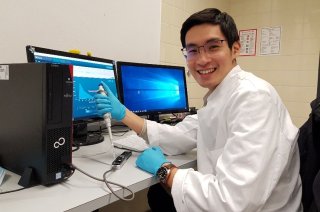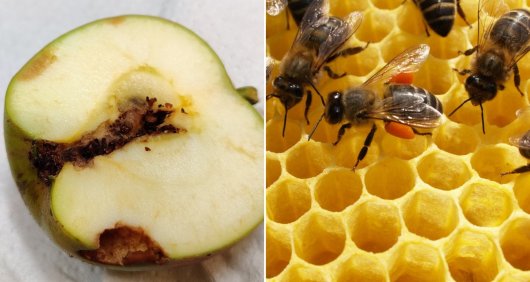
PhD project
Project 10 Development of diagnostics tools for pathogen detection in a variety of mass reared insects (DE)
Surveying the prevalence of pathogens in mass-reared insects is essential for preserving insect colonies with significant economic and environmental impacts. A combination of Next Generation Sequencing technologies and metagenomics may provide an effective solution for producing a rapid, on-site diagnostic tool with potential application to different insect models.
The goal of this project is to develop a diagnostic tool for the early detection of pathogens in mass reared insects. We are aiming to deploy a customizable tool, able to work on-site at rearing facilities and flexible enough to be used in different insect models. This will be achieved by using a metagenomics targeting approach using the latest sequencing technologies. One tool of choice is the pocket-sized portable MinION sequencer (Oxford Nanopore Technologies, Oxford, UK) that is easily accessible at a low start-up cost and has proven promising for pathogen surveillance in humans and plants. Having a portable and easy to run on-site diagnostic tool will be useful for periodic monitoring of pathogens in insect mass-rearing facilities to detect early infections before disease onset. We will evaluate the use of this technology in multiple mass-reared insect models of agricultural importance, including the codling moth (Cydia pomonella) and the Western honeybee (Apis mellifera).
The metagenomic sequencing and the pipeline for analysis: the sampling strategy, nucleic acid preparation, sequencing workflow and the actual bioinformatics analysis for diagnostics, will be established. A database containing available sequences of insect pathogens will be constructed from public repositories. The output will be a customizable database for each insect model that will function as the reference in the bioinformatics pipeline in development. Emphasis will be placed on evaluating the overall quality of the sequence data, generated from MinION sequencing of test specimens, as well as the sensitivity and accuracy of the bioinformatics analyses to carried out for diagnostics. This will be achieved by initial in silico testing of the pipeline using sequences from artificially created microbial communities, followed by further evaluation using insect colonies from mass-rearing facilities and from the field. Test specimens will include mock- and naturally infected insects.
The efficiency of the diagnostic tool in development will be compared to that of conventional diagnostic methods, such as quantitative PCR and microscopy. Later, the diagnostic tool will be deployed in the field to determine the presence and prevalence of pathogens affecting C. pomonella, A. mellifera as well as other economically important insects from various mass-rearing facilities and from the wild.

